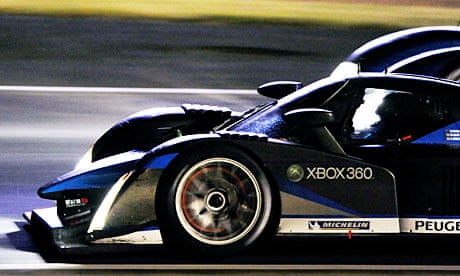While medical chiefs in Las Vegas and IndyCar officials have announced that they are to work together to review and examine what lessons can be learned from the crash that killed Dan Wheldon last weekend, Formula One is already a considerable distance down the road to adopting closed cockpits in a bid to improve driver safety in cars.
The exact circumstances that led to Wheldon's death will be examined in the review but fundamental to it was his car entering the catch netting cockpit-first, meaning the only protection the driver had was his helmet. The FIA has been looking into methods of reducing the risk from flying objects, including discussions with the manufacturers of canopies used in fighter jets, since Felipe Massa was severely injured by a spring that had worked loose from the rear suspension of Rubens Barrichello's Brawn at the Hungarian Grand Prix in 2009.
Massa's incident occurred only one week after Henry Surtees, son of world champion John Surtees, was killed by the impact to his head by a wheel that had broken free from another car during a Formula Two race at Brands Hatch. "We've had four or five examples of things where we have had close calls, plus, unfortunately in the case of Henry Surtees it was not a close call. That is why the FIA is taking it very seriously, and [assessing] what can be done," said Sam Michael earlier this year, while in his position as Williams's technical director. He will be sporting director for McLaren in 2012.
The FIA has presented its findings thus far to the F1 Technical Working Group and to the drivers in a briefing at Monza this year. "It's something we're analysing in the TWG at the moment, taking very seriously," said Michael at the time, adding: "The final form of what that takes has yet to be decided, it's still to be decided in the TWG."
"It was a presentation on the canopy and also some devices for the visor," said Barrichello, who is chairman of the Grand Prix Drivers' Association, of the briefing in Italy. "We, as the GPDA, are very happy that the FIA is taking more into it, to give us the best options possible for safety. All we ask as the GPDA is to be more part of it."
Adding a cockpit will be highly unpopular with fans, with the open-wheel, open-cockpit format seen as part of the brand of Formula One and a further level of separation from the drivers likely to be equally decried. While, in the cockpit, issues such as visibility, evacuation and even claustrophobia, are thought to be of concern to the men behind the wheel.
Which may make the alternative, an additional device to protect the at-risk area where visor meets helmet, more likely to be the first mandatory addition to the sport's safety regulations. Asked about canopies at the Japanese Grand Prix, McLaren's technical director, Paddy Lowe, admitted that while the concept had undergone considerable research, it was not yet a foregone conclusion. "I don't think it's inevitable. It's something that's being studied. A lot of discussion has occurred at council meetings in the FIA as to whether such a thing is right for the sport."
However, in America, Paul Tracy, the 2003 Champ Car champion and one of the 15 drivers caught up in the crash at the Las Vegas Motor Speedway on Sunday, believes the fencing on oval circuits is the most crucial safety failing in IndyCar racing. "I think there can be improvement made in the catch fencing," he said.
"There has been so much improvement done with the SAFER [Steel and Foam Energy Reduction], walls, and heads and neck restraint systems, and the seats and the cars have got safer and safer. But what has really stayed the same is the catch fencing along the walls. Once the cars get in there it just starts ripping the cars apart. So maybe that is the next thing that needs to happen in terms of safety for race events."
The former Formula One world champion Mario Andretti, whose son Michael's Andretti Autosport team was going to run Wheldon in next year's IndyCar series, also thought that fencing was an issue. "Dan's situation was a very freakish thing where his car flew right up into the catch fencing," he said. "The track is very well equipped, it is one of the few tracks to have SAFER walls all the way around, but he just missed the top of it. It was so unfortunate."
Nonetheless, the concept of closed cockpits is unlikely to go away, especially in the wake of Wheldon's death. Earlier this year both Britain's Allan McNish and the German Mike Rockenfeller climbed unhurt from their Le Mans prototype (LMP1) cars after huge crashes at the 24 Hours of Le Mans. They were driving closed-wheel sportscars but the top speeds are similar to Formula One and IndyCar. A fact observed by the Australian driver Ryan Briscoe, who was competing in Las Vegas but not involved in the crash and posted on Twitter: "I'd like to see future IndyCar/Open wheelers with closed cockpits one day, like modern Le Mans LMP1 cars have today."
